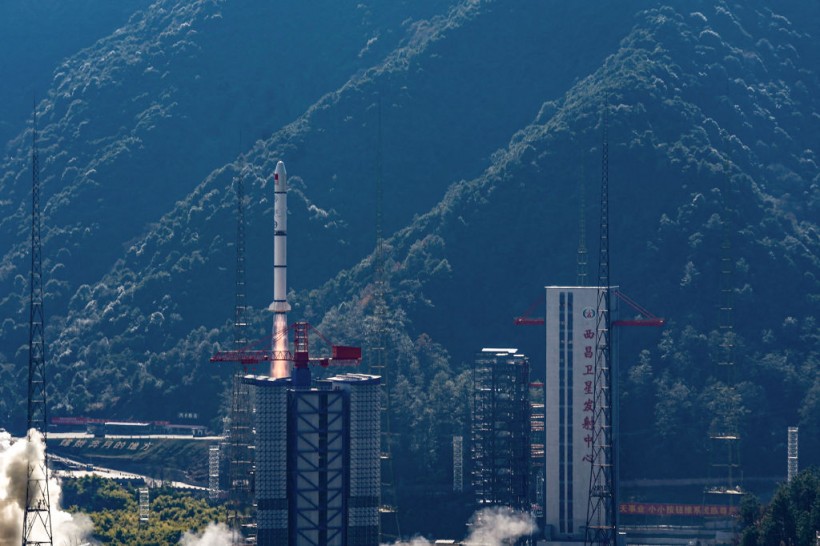CAS Space, a Beijing-based rocket maker affiliated with the Chinese Academy of Sciences, is gearing up for the highly anticipated launch of its next-generation rocket.
The Kinetic-2, targeting an August 2025 launch, promises to be a game-changer, boasting impressive specifications and reusability features (via Space.com).

A Long March-2C rocket, carrying the Einstein Probe satellite, lifts off from the Xichang Satellite Launch Center in Xichang, in southwestern China's Sichuan province on January 9, 2024. (Photo by AFP) / China OUT
China's Bigger, More Powerful Space Rockets
CAS Space, also known as Zhongke Aerospace Exploration Technology Company, has already made waves with its Kinetica-1 solid rocket, which briefly held a national record for the number of satellites on a single launch.
Now, the focus is on the larger and more intricate Kinetic-2, a liquid propellant rocket that will soar to a height of 174 feet (53 meters).
According to Yang Haoliang, CAS Space's Vice President, the Kinetic-2's design includes an 11-foot-wide (3.35 m) core stage flanked by two side boosters.
ChinaDaily reports that this powerhouse will be fueled by kerosene and liquid oxygen, enabling it to carry a payload of 17,200 pounds (7,800 kilograms) to a sun-synchronous orbit or an impressive 26,450 pounds (12,000 kg) into low Earth orbit.
China's Reusable Rockets
What sets the Kinetic-2 apart is its ambitious plan for reusability. The company envisions using early launches for experimental payloads to perfect core stage and booster reusability by 2028.
To achieve this milestone, CAS Space conducted liftoff and landing tests with a jet-powered prototype, focusing on refining guidance, navigation, control systems, and the necessary software and communications infrastructure.
Read Also: Japan's Moon Sniper Mission Aims for Precision Landing Attempt This Weekend
A Look at CAS Space
Established in December 2018 as a spinoff from the state-owned Chinese Academy of Sciences, CAS Space is charting its course in the competitive space industry.
While the company does not handle major national missions, it is actively pursuing a commercial future, stepping into suborbital tourism services akin to Blue Origin and launching a low-cost rideshare program for space science missions.
What's Next?
The Kinetic-2 symbolizes China's strategic vision for space exploration. ChinaDaily, in a report, tells us about the rocket's significance in deploying low-cost cargo spaceships, forming space-based internet networks, and launching science satellites.
The maiden flight in 2025 will mark a pivotal moment, carrying a prototype low-cost cargo vessel designed by the Innovation Academy for Microsatellites.
CAS Space's commitment to advancing its capabilities is evident in establishing a rocket plant in Guangzhou's Nansha district, the first in South China's Guangdong province.
Concurrently, the company is constructing a rocket engine testing facility in Aotou township in Guangzhou, underscoring its dedication to both rocket manufacturing and propulsion technology.
In Other News
Osaka's laser fusion company, EX-Fusion, is developing an on-ground laser system to remove small space debris across Earth's orbit.
The Japanese startup is reportedly planning to use an EX-Fusion to install a powerful laser inside an EOS Space observatory outside of Canberra, Australia, with tracking space debris smaller than 10 cm.
Stay posted here at Tech Times.
Related Article: NASA Should Beat China in Moon Race, US Congress Says









